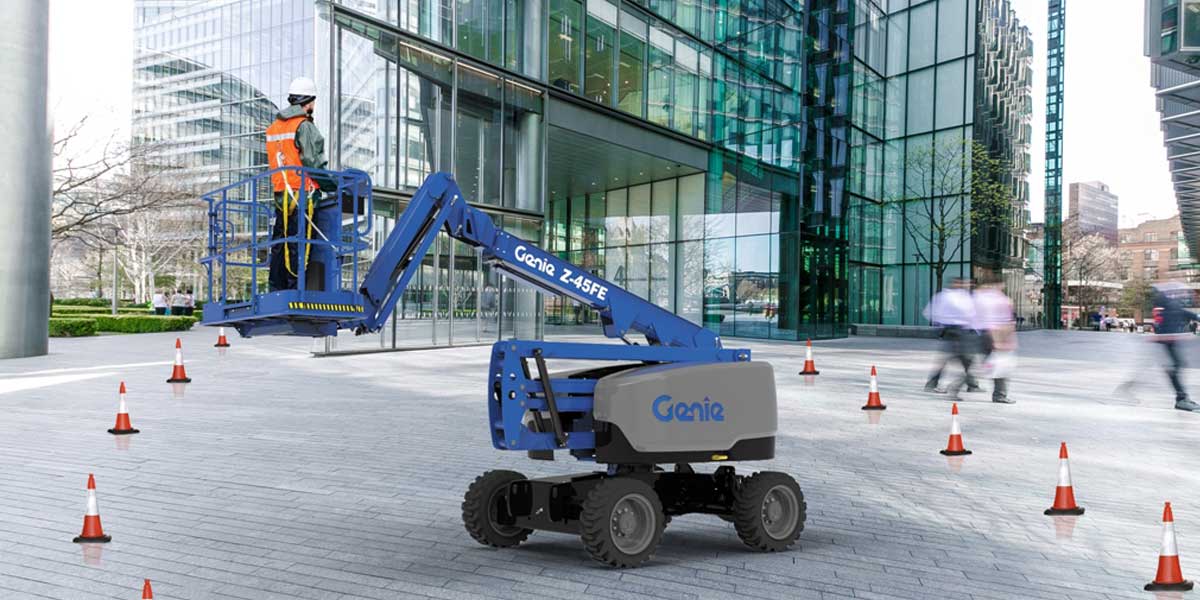Selecting the Appropriate MEWP
01 Jul 2020
Long Read

Mobile elevating work platforms (MEWPs) come in a variety of designs and unique performance characteristics. Understanding what each machine’s capabilities are is essential to selecting the right MEWP for a particular project. ANSI A92.22-2018 and CSA B354.7:17 standards require that companies employ an appropriate MEWP for the task, so it’s important for you to understand all of the different MEWP options available as you create a safe use plan.Mobile elevating work platforms (MEWPs) come in a variety of designs and unique performance characteristics. Understanding what each machine’s capabilities are is essential to selecting the right MEWP for a particular project. ANSI A92.22-2018 and CSA B354.7:17 standards require that companies employ an appropriate MEWP for the task, so it’s important for you to understand all of the different MEWP options available as you create a safe use plan.
Classifications
MEWPs are classified according to two key distinguishing descriptions:
An MEWP group is determined by the platform’s location in reference to the tipping line
Group A machines have a design that does not allow the main platform to extend beyond the tipping line. Scissor lifts are part of this group.
Group B machines have platforms that are designed to extend beyond the tipping line. Articulating and telescopic booms are part of this group.
An MEWP type is in reference to travel.
Type 1 machines are only allowed to travel with the MEWP in its stowed position. Manually propelled vertical lifts are part of this group.
Type 2 machines travel with the work platform in the elevated position and controlled from a point on the chassis. Underground-bridge inspection machines are part of this group.Type 3 MEWP can travel in an elevated position and is controlled from a point on the work platform. Scissor lifts, as well as articulated and telescopic booms, are good examples of this group.
Answering who, what, where, how and when
These classifications are important to know as you determine which type you should use for a project. Using the wrong machine could result in injury or death, damage to the machine or damage to the work location. As you weigh your needs, answer the following questions.
Who is using the equipment and how many people will be in the platform at once? Also, have they been trained?
What kind of work is being done, what’s being lifted and what hazards exist on the worksite?
How will the equipment be used and at what height and reach?
Where will the MEWP be used and what kind of environment will it be operating in?
When will the equipment be needed and for how long?
Answering these questions will help you determine the group and type of MEWP you need. Your answers can also assist in identifying an appropriate model.
Choosing a model
Each MEWP industry has specific needs, which is why manufacturers like Genie offer many different models in each of the MEWP classifications. Options range from how an MEWP is propelled to several different power options and engine types. There are also many different tyre/track and steering options available depending on the category of MEWP.
Classifications
MEWPs are classified according to two key distinguishing descriptions:
An MEWP group is determined by the platform’s location in reference to the tipping lineGroup A machines have a design that does not allow the main platform to extend beyond the tipping line. Scissor lifts are part of this group.
Group B machines have platforms that are designed to extend beyond the tipping line. Articulating and telescopic booms are part of this group.
An MEWP type is in reference to travel.
Type 1 machines are only allowed to travel with the MEWP in its stowed position. Manually propelled vertical lifts are part of this group.
Type 2 machines travel with the work platform in the elevated position and controlled from a point on the chassis. Underground-bridge inspection machines are part of this group.
Type 3 MEWP can travel in an elevated position and is controlled from a point on the work platform. Scissor lifts, as well as articulated and telescopic booms, are good examples of this group.
Answering who, what, where, how and when
These classifications are important to know as you determine which type you should use for a project. Using the wrong machine could result in injury or death, damage to the machine or damage to the work location. As you weigh your needs, answer the following questions.
Who is using the equipment and how many people will be in the platform at once? Also, have they been trained?
What kind of work is being done, what’s being lifted and what hazards exist on the worksite?
How will the equipment be used and at what height and reach?
Where will the MEWP be used and what kind of environment will it be operating in?
When will the equipment be needed and for how long?
Answering these questions will help you determine the group and type of MEWP you need. Your answers can also assist in identifying an appropriate model.
Choosing a model
Each MEWP industry has specific needs, which is why manufacturers like Genie offer many different models in each of the MEWP classifications. Options range from how an MEWP is propelled to several different power options and engine types. There are also many different tyre/track and steering options available depending on the category of MEWP.
Related Stories

